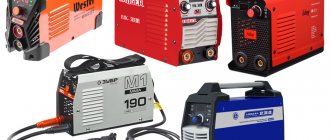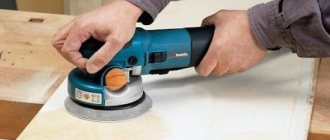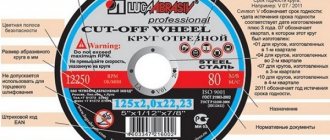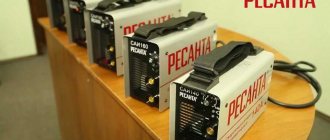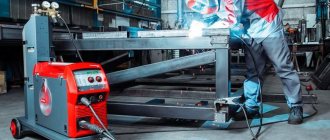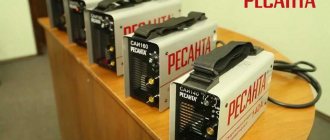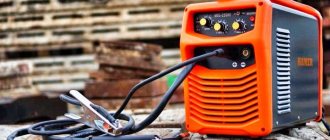Author: Alexander Starchenko
Inverter voltage stabilizers are gradually taking first place in popularity. They are very reliable, compact, provide ideal output voltage characteristics and have no mechanical parts. Thanks to its exceptionally high parameters, the inverter voltage stabilizer is perfect for powering any household and office equipment. It is also used as a power source in production, home and country stabilizer.
What features of inverter stabilizers should you pay attention to when choosing?
Before purchasing a double conversion stabilizer, you should study its main characteristics:
- Number of phases. Single-phase inverter stabilizers are suitable for powering household and office equipment. Three-phase equipment is mainly used to power 380 V industrial systems.
- Active power. This is a key parameter of the device that determines the power of the load (one or more consumers in total). A stabilizer with less power than necessary will overload and cause shutdowns.
- Input voltage. Inverter models support a wide range of input voltages and provide the ability to work with problematic electrical networks. Built-in automation switches off the load when the limit value threshold is exceeded.
- Precision stabilization. Double conversion stabilizers provide minimal output deviations from the nominal value. Typically the parameter does not exceed 2 percent. High accuracy guarantees reliable operation of the connected equipment.
- Management and monitoring. Monitoring and management tools allow you to analyze and manage device operating parameters. Inverter stabilizers are equipped with light and/or digital indication and support the installation of local and remote monitoring modules.
Internal structure
Why can inverter stabilizers achieve such efficiency and proudly bear the title of leader among all types of stabilizers? This is achieved thanks to a different operating principle and, of course, a different structure (it is shown in Fig. 1).
A classic inverter stabilizer consists of: - input filters (IF); — rectifier and power factor corrector (KKM-V); — capacitors (VIP) — DC-AC voltage converter (DCV); — microcontroller (MK).
Rice. 1. Inverter stabilizer circuit.
It is worth noting that the rectifier and DC-DC converter are inverters, which are built on the basis of IGBT transistors, that is, based on insulated gate bipolar transistors, and MOSFET, that is, on a metal-oxide semiconductor.
These transistors can switch very high currents and experience very little energy loss during operation.
The best single-phase inverter stabilizers for 220 volts
Single-phase double conversion stabilizers are an excellent solution for organizing high-quality power supply for computers, office equipment, heating, ventilation devices and other 220 V equipment.
Rating of the TOP 5 best inverter voltage stabilizers for 220 volts for the home in terms of price and quality ratio.
Calm IS350 (0.3 kW)
The inverter single-phase stabilizer Shtil IS350, which has a high level of protection and maximum accuracy, will provide high-quality power to household appliances and electrical appliances with a total power of 0.3 kW.
The presented equipment produces a stable sinusoidal voltage at the output.
The device is characterized by silent operation.
It is equipped with electronic protection with auto-recovery against overloads, overheating, short circuits, voltage exceeding 400 V, and sudden pulse changes.
The product is supplemented with a 2 kV varistor and is reliably protected from high-frequency interference at 100 kHz.
Main characteristics:
- rated power - 300 W;
- input voltage - 90-310 V;
- stabilization accuracy - ±2%;
- output voltage - 216-224 V;
- protection - against short circuit/overheating/overload/interference;
- placement option: wall-mounted;
- cooling - passive natural;
- indication - LED;
- connection - network cable, socket;
- overall dimensions - 155x223x80 mm;
- device weight - 2 kg.
Advantages
- ease of use;
- stencil for installation included;
- high-quality assembly and materials;
- stable output voltage.
Flaws
- inconvenient location of the outlet;
- lack of digital display;
- non-removable power cable.
Stil IS5000 2022 (4.5 kW), gray
The single-phase stabilizer Shtil IS5000 2022 with double conversion technology is designed to power and protect various electrical equipment with a total power of 4500 W.
The product is intended for wall mounting.
The device is equipped with an LCD display, an automatic switch, and power terminals for connection.
The device allows you to manually change the output voltage in the range of 220-230 V in 1 V steps.
The combined (convection-fan) cooling system automatically switches to active mode when the critical heating temperature of the stabilizer components is reached.
The device is equipped with full electronic protection, surge protectors, and a digital screen for monitoring.
Main characteristics:
- rated power - 4500 W;
- input voltage - 90-310 V;
- stabilization accuracy - ±2%;
- output - 216-235 V (adjustable);
- protection - against short circuit/overheating/overload/interference;
- placement option: wall-mounted;
- cooling - combined type;
- indication - digital display;
- connection - power terminals;
- overall dimensions - 246x358x101 mm;
- device weight - 6 kg.
Advantages
- light weight;
- compact dimensions;
- high power;
- decent equipment.
Flaws
- heating under load;
- noisy cooling system.
Shtil IS10000 2022 (9 kW), gray
The single-phase inverter model Shtil IS10000 2020 with a power of 9 kW is a stabilizer with improved technical characteristics, working using double energy conversion technology.
The device provides continuous smooth stabilization of the input voltage over a wide range.
The device's response speed in case of deviations in power supply parameters approaches 0 ms.
It is possible to provide uninterrupted power supply to consumers during a short-term power outage (up to 200 ms).
The combined cooling system goes into active mode when the internal temperature of the stabilizer reaches a critical level.
The model is complemented by electronic and manual bypass.
Main characteristics:
- rated power - 9000 W;
- input voltage - 90-310 V;
- stabilization accuracy - ±2%;
- output - 216-235 V (adjustable);
- protection - against short circuit/overheating/overload/interference;
- placement option: wall-mounted;
- cooling - combined type;
- indication - digital display;
- connection - power terminals;
- overall dimensions - 370x498x101 mm;
- device weight - 11 kg.
Advantages
- high stabilization accuracy;
- wide input range;
- excellent performance;
- auto-recovery after protection is triggered.
Flaws
- high price;
- noisy cooling fans;
- heavy weight.
Stil IS550 (0.4 kW), gray
The compact mounted stabilizer Shtil IS550 in a practical and stylish gray casing is an inverter converter designed to power and protect against voltage surges of electrical equipment with a total power of 4000 W.
In particular, the model is recommended for gas boilers, audio and video equipment, computers and other equipment sensitive to the quality of current.
The device provides smooth and continuous adjustment of the input voltage over a wide range (90-310 V).
In the event of a short-term absence of electricity in the network (no more than 200 ms), the stabilizer automatically switches to its own autonomous power supply.
Main characteristics:
- rated power - 400 W;
- input voltage - 90-310 V;
- stabilization accuracy - ±2%;
- output - 216-224 V (adjustable);
- protection - against short circuit/overheating/overload/interference;
- placement option: wall-mounted;
- cooling - passive natural;
- indication - LED;
- connection - network cable, socket;
- overall dimensions - 155x245x82 mm;
- device weight - 2 kg.
Advantages
- compact dimensions;
- stabilization accuracy;
- reliability of design;
- high build quality.
Flaws
- decent energy consumption without load;
- inconvenient location of the power button;
- low power.
Stihl IS8000 (7.2 kW), gray
The inverter single-phase model Shtil IS8000 in a compact gray housing is designed to power individual electrical appliances or groups of devices with a maximum total power of 7200 W.
The device has high technical parameters.
This includes continuous stepless stabilization over a wide range, instant response to network deviations (up to 0 ms), ideal sinusoidal voltage, and high alignment accuracy.
Ease of use is provided by an informative LCD screen that displays the main parameters of the network and stabilizer, and alarm messages.
Main characteristics:
- rated power - 7200 W;
- input voltage - 90-310 V;
- stabilization accuracy - ±2%;
- output - 216-235 V (adjustable);
- protection - against short circuit/overheating/overload/interference;
- placement option: wall-mounted;
- cooling - combined type;
- indication - digital display;
- connection - power terminals;
- overall dimensions - 370x498x101 mm;
- device weight - 11 kg.
Advantages
- high-quality stabilization;
- high performance;
- small dimensions;
- ergonomic body;
- convenient wall location.
Flaws
- high price tag;
- heavy model
- noisy coolers.
Device Features
If we sum up the intermediate results, we can safely say that a 220 V inverter stabilizer is fundamentally different from electromechanical, relay or triac stabilizers. The main difference is that the composition does not contain such an element as an automatic transformer. You can also compare the double conversion process that the inverter carries out and the switching of the transformer winding in other types. Conversion in two stages is much more efficient, which makes the inverter more progressive and better among other devices.
It is also worth mentioning that any voltage surges that are possible at the input to inverter stabilizers for the home are leveled out using a capacitor included in the device. This is due to the fact that in this element energy can accumulate and then be transmitted in the form of a stable alternating current.
The best three-phase models of inverter stabilizers
Three-phase double conversion stabilizers have found their application in industry, commercial and domestic facilities with a 380 V power supply.
Shtil IS3320RT (16 kW), gray
Three-phase inverter-type stabilizer Shtil IS3320RT in a compact gray housing is an ideal solution for powering electrical consumers with a total power of up to 16 kW.
The double conversion technology used in the device ensures no delay in response to network fluctuations (up to 0 ms), voltage changes over a wide range, increased accuracy, and an ideal sinusoidal output.
The cooling system in this model is based on low-noise fans; connection to the network and load is provided by terminal blocks.
A modern LCD display shows the main operating parameters of the device and allows you to make a number of settings.
Main characteristics:
- rated power - 16000 W;
- input voltage - 90-310 V;
- stabilization accuracy - ±2%;
- output - 216-224 V (adjustable);
- protection - against short circuit/overheating/overload/interference;
- placement option - universal;
- cooling - forced fan;
- indication - digital display;
- connection - power terminals;
- overall dimensions - 220x515x560 mm;
- device weight - 35 kg.
Advantages
- good assembly;
- universal installation;
- clear settings;
- wide input range.
Flaws
- weak transport wheels;
- noisy cooling system.
Shtil IS3315RT (13.5 kW), gray
The three-phase inverter model Shtihl IS3315RT 13.5 kW will provide power and protection to individual devices or groups of electrical equipment that are sensitive to current quality.
The stabilizer is equipped with a convenient control panel with an informative display, forced fan cooling with a system for adaptively changing the rotation speed depending on the load, protection against impulse noise, malfunctions and failures.
The device features a bypass mode and the ability to manually change output parameters in 1 V steps.
There is an optional possibility of organizing local or remote monitoring.
Main characteristics:
- rated power - 13500 W;
- input voltage - 90-310 V;
- stabilization accuracy - ±2%;
- output - 216-224 V (adjustable);
- protection - against short circuit/overheating/overload/interference;
- placement option - universal;
- cooling - forced fan;
- indication - digital display;
- connection - power terminals;
- overall dimensions - 220x515x560 mm;
- device weight - 35 kg.
Advantages
- high quality workmanship;
- excellent technical parameters;
- relatively compact dimensions;
- ease of movement and transportation.
Flaws
- inconvenient screw clamps;
- heating of the case during operation;
- uninformative instructions.
Shtil IS3110RT (8 kW)
The three-phase stabilizer Shtihl IS3110RT with a power of 8000 W will protect various equipment from voltage surges in the network with uniform loading of all supply phases.
The model is made in a powerful metal case, has the possibility of vertical and horizontal installation.
The device is equipped with a rotating control panel with a digital LCD display, a terminal block and an input machine on the rear panel.
There are slots for optional installation of expansion cards for local and remote monitoring.
Cooling is provided by fans with intelligent rotation speed control.
Main characteristics:
- rated power - 8000 W;
- input voltage - 90-310 V;
- stabilization accuracy - ±2%;
- output - 216-224 V (adjustable);
- protection - against short circuit/overheating/overload/interference;
- placement option - universal;
- cooling - forced fan;
- indication - digital display;
- connection - power terminals;
- overall dimensions - 250x459x530 mm;
- device weight - 17 kg.
Advantages
- high stabilization accuracy;
- instant response to input changes;
- uninterruptible power supply to the load;
- reliable emergency protection;
- high efficiency.
Flaws
- not an affordable price tag;
- heating under load;
- noisy fans.
Tips for use
Although the normalizer has rather unpretentious qualities, it is still worth listening to useful tips so that the device does not fail:
- indoor humidity should not exceed 95%;
- prevent water from entering and condensation forming inside the housing;
- do not install in explosive, dusty areas where insects and rodents live;
- do not install in open areas;
- do not cover the device and ensure good ventilation;
- carry out regular maintenance;
- Clean with a vacuum cleaner when switched off.
Own power consumption
It is quite obvious that both stabilizers will themselves consume energy to ensure their operation.
The classic stabilizer consumes energy for 3 relays, an indication and a controller. The total current is about 100mA at a voltage of 12V (3 relays: 30mA x3 = 90mA). Taking into account losses on the power supply (multiply by 3), in the worst case we have 3.6 W. This is true for models up to 1000VA. Stabilizers from 4500VA to 40000VA have a power consumption of 15 - 20W.
The own power of inverter stabilizers depends on the total power of a particular model. For 350VA models it is 25W, for 3500VA it is 40W, for 12000VA it is 75W, for 13500 it is already 150W, etc.
A simple calculation shows that an inverter stabilizer with a power of 350 VA will “eat up” energy worth more than 1000 rubles per year, 12000 VA will consume more than 3,000 rubles, and 13,500 VA, respectively, will consume 2 times more energy, i.e. more than 6000 rubles.
For classic, even powerful models, these costs will not exceed 1000 rubles per year.
The feasibility of creating it yourself
What is better: to make a voltage stabilizer with your own hands or is it better to purchase a ready-made device? Everyone decides for themselves.
The first plus is the benefit, since the devices are not cheap. The second positive point is knowledge of the “stuffing” of the device; it will make it possible to find and replace a faulty part, which is easy to find in the store. The disadvantages of this option include the low level of reliability of homemade products, since in factories quality is guaranteed by special and measuring equipment, which you don’t even have to think about at home.
If creating a homemade stabilizer seems quite complicated, then it is better to go the traditional, but irrational way - to purchase a ready-made device. In this case, there is no doubt about its reliability.
Anyone who decides to make a voltage stabilizer with their own hands should see what kind of work lies ahead of them. It is better to start with simple models, and useful information can be gleaned from this video:
Ferroresonant converters
The beginning of mass production and household use of voltage stabilizers in our country dates back to the 60s of the 20th century and is associated with the advent of tube televisions. The first voltage stabilizers were ferroresonant converters, the operating principle of which is based on electromagnetic interaction between two chokes: with an unsaturated core (input) and a saturated core (output).
For their time, ferroresonant stabilizers had good technical characteristics, but also had a number of serious drawbacks:
- high level of noise and heat generation;
- harmonic distortion of the output signal;
- dependence of stabilization accuracy on load magnitude.
It is worth noting that in modern ferroresonance stabilizers the above disadvantages are minimized or completely eliminated, but the price of such devices is quite high, which makes them rarely used for domestic purposes.
How the equipment works
The inverter converter performs only two main functions during its operation. The first one is the conversion of alternating current into direct current, and the second function is the reverse conversion of direct current into alternating current.
It is worth considering in more detail the principle of operation in order to understand why the device performs two functions that are opposite to each other.
Voltage stabilizer as a solution to the problem of low quality power supply
In the Russian Federation, the values of rated voltages for electrical systems and networks are established by GOST 29322-2014 “Standard Voltages”. Electric power quality standards, that is, the degree of compliance of actual parameters with established values, are regulated by GOST 32144-2013 “Electric Energy”, according to which deviations of no more than ±10% in voltage and no more than ±0.2 Hz in frequency are permissible.
Today, there is a trend of non-compliance with the above standards by the majority of energy supply companies. This situation is associated both with the constantly growing load on the electrical grid complex and with the reluctance of many electricity suppliers to invest in the development and modernization of cable lines, where the wear and tear of the infrastructure ranges from 50 to 70%, according to various estimates.
At the same time, almost all modern equipment, from household audio and video equipment and a gas boiler to industrial conveyor drives and automated machines, contains electronic components that are sensitive to changes in supply voltage. In addition, the requirements for the quality of network electricity for a number of high-tech consumers (computing, medical telecommunications equipment) exceed current standards.
There are several ways to solve the problem of low quality network electricity. One of the simplest and most economical is to install an AC voltage stabilizer between the load and the network. The main function of this electrical product is to automatically maintain the set value of the output “load” voltage when the input voltage fluctuates.
Criterias of choice
When choosing an inverter-type rectifier, you should be guided by the following characteristics:
- device power;
- permissible load level;
- speed of voltage equalization;
- output voltage waveform;
- accuracy of the specified parameters;
- the value of permissible fluctuations;
- operating conditions.
Power is the most important criterion for choosing a stabilizer. These characteristics of the device are selected in accordance with the factor how many consumers will be connected to it - one apartment or the entire apartment building.
It is necessary to carefully calculate the entire potential load on the rectifier. To the obtained value, add 25% of the reserve power so that the device does not experience maximum load.


